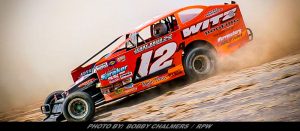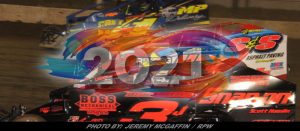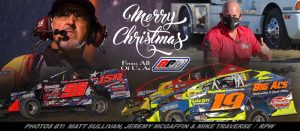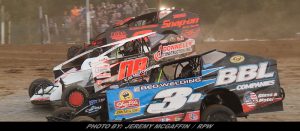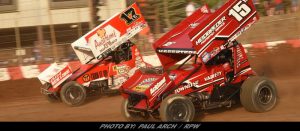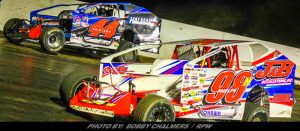Building A 4-Cylinder; It’s Time To Race!
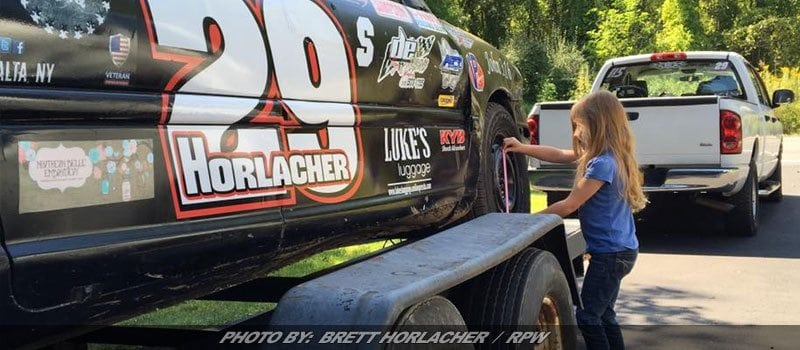

Column By: BRETT HORLACHER / RPW – CLIFTON PARK, NY – As the winter freeze turns into the spring thaw, race promoters and track operators start to get their facilities ready for the upcoming season. As you finish your lean-mean race machine, there are some things that you need to know if you’re going to be a racer on your first day. In this, the fifth and final edition of our five-part series, I will give you some “good to know” items for your first day at the track, completing your journey from the grandstands to the cockpit. This is the building of a 4-cylinder race car.
Step 5…Your First Race Day As A Racer.
Again, Check Your Rules
Most tracks have general procedures and rules in an attempt to make their facilities run smoothly. As a racer at their facility, you are expected to know these rules and procedures, regardless if you’re a veteran or a rookie. Some rule violations (mostly egregious safety violations) may get you suspended, or even banned. Read the rule book and ask your fellow racers some of the “Do’s and Don’ts”
Pit Safety
Two words…SLOW DOWN! Tearing through the pits is an incredibly fast way to get officials upset with you. The pit area is a very noisy place, and a lot of people in there are often distracted. With your 4-cylinder race car, you make less noise at normal RPM than a V8 does, so pedestrians & crew members may not hear you. Therefore, it will be your job to avoid them. Going slow is the best way to avoid hitting people or other cars.
Wear safety glasses, especially when hitting / striking / grinding / working where items can fall into your eyes.
Bring some hearing protection. You only get one set of ‘ears.’
Have a working fire extinguisher nearby.
Make A List, Check It Twice
First and foremost, you must have ALL of your safety gear with you to race. NEVER, EVER sacrifice your safety so you can turn laps…even in practice. A good idea is to put on all of your required safety equipment during a quiet evening, and literally, write down each item. Use this checklist as you get ready until you no longer need it.
Personally, I still ‘dress myself’ mentally to ensure that I have each item needed, but mistakes happen. I’ve had my wife load up our infant daughter in the car and bring me a neck brace to the track that I forgot. When she pulled into the parking lot, I met her and apologized. Her response to me? “Thank you for taking your safety seriously. Be safe and go win.” I’m happy to say that I did win that night.
All of your tools, equipment, spare tires and the like are the next priority. Stage them somewhere, if you can, the night before so you can easily load everything up the next day. Running around last-minute and trying to gather everything up can be stressful and put you in a position to forget different items.
Until you get to a point where you have separate ‘track’ and ‘shop’ items, you’ll have to do this each week. These things are also great to put on a list, but you’ll quickly get experienced enough and develop normal routines that will replace your lists. Until then, keep your list handy.
Trailer Loading And Towing
Layout & construction of trailers may vary, but there are certain characteristics that nearly all of them share.
Keep the heaviest portion of the load forward of the axles and keep make sure it’s centered. Since most cars have the greatest weight over the front axles (primarily due to the engine), this can be accomplished by pulling the car onto the trailer where the engine is entirely forward of the front axle.
If you have a generator, place it centerline on the trailer and forward of the axles. A trailer with improper weight distribution will not be fun or easy to pull and will sway back and forth, even at low speeds. This condition can actually get bad enough to cause you to crash.
Keep the trailer’s tongue weight below your vehicle’s rated maximum. Placing too much weight on the tongue of the vehicle can cause damage and reduced performance. In some extremes, it can cause the vehicle to lose the ability to effectively turn and cause extreme damage to the suspension of the tow vehicle. A good weight balance between the trailer’s axles and the tow vehicle is the best bet.
Secure your vehicle to your trailer
The goal when securing your vehicle to the trailer, “Commonly referred to as tying it down,” is that the car will not move during transit and non-emergency maneuvers. Buy quality ratchet straps for securing the car. Tighten the straps, and remember that the car is going to bounce. If the strap is placed on a piece of the vehicle that will move when going over bumps, the strap will not be tight as the car’s height lowers as it bounces.
Attaching the straps to pieces of the vehicle that do not normally move is the best method. Your vehicle’s design and trailer layout will dictate what works best for you. Remember, if you lose your car on the road, even in an accident, you are responsible for it.
The most powerful force on your vehicle is NOT the engine, it is the BRAKES. Ensure that your vehicle cannot move forward when securing it to the trailer.
Slow down, turn wider, and allow more room to stop
Towing a trailer is far different than driving a regular vehicle. Your trailer is, in some cases, longer than usual, and will cause your vehicle to move and react differently than normal. Slow down, and anticipate turns.
It will naturally tend to track inward on a turn. Allow for this factor by taking turns wider and slower than you normally would.
Maintain adequate room between your tow rig and the vehicle in front of you. Your vehicle now weighs upwards of 8000 pounds and it will take more distance to stop.
Pit Admission, Parking, Unloading
Many tracks require you to sign a release to race. Some will have licensing fees, and most will have pit admission fees. On your very first trip to the track, as a racer, you will usually see a line of trailers with drivers and crews hopping out to sign in. Watch this and follow suit.
If you are a rookie racer, more than likely, that means you will not have a reserved spot in the pits. These are usually marked by signs with a driver’s number and / or name on them. The question of where to park is usually best answered by your local racers.
Unload your car and bring it to the technical inspection area. Take all of your safety equipment with you. Most tracks will want to inspect your helmet, fire suit and belts. After inspection, take the car back to the trailer, check your tire pressures, lug nut tightness and get psyched for your first laps.
Staging Areas
Pay attention to where other cars stage prior to going onto the track. Also, some pit areas only allow ‘one-way’ travel in certain areas. This is done for safety and efficiency.
Pay attention, and if need be, ask questions. Few racers will scoff at you for asking legitimate questions. They will understand that you are new to the track, and in most cases, will be very helpful.
Practice / Warm-Ups / Hotlaps
These are all names for a similar racing condition. As you get on the track, allow adequate space between you and the car in front of you and pay attention to the Flagger.
Under green flag conditions, you run the car at full speed, practicing and gathering data. Passing a slower car in front of you is allowed, but should be done carefully. You should not touch or rub another car during the hot lap session.
If the yellow flag comes out, slow down and obey the race controller & flaggers. Unless absolutely necessary to avoid hitting another vehicle, do not slam on the brakes. Slow down in a controlled manner.
During your practice session, you should try to run a few laps low, and a few laps high up. Adjust your corner entry location and feel out how the car responds.
Your First Actual Race
First of all, you Made It! There are a couple of hundred folks sitting in the stands who want to race, but very few actually put themselves in a position to do it. You are now part of the few. It’s time for you to really learn.
My advice, take it or leave it, start where you feel comfortable. If you have never raced before, start at the rear, regardless of where you draw or are handicapped. No track will deny you if you tell them you want to start last or ‘scratch.’
Cars drive very differently racing rather than on the street. Starting in the back allows you to make minor mistakes and have it only effect you. Follow the racers in front of you. See where they enter the corner and observe where they pull away from you. The odds of you winning your first race ever are low, but your odds of learning a ton are very high…especially if you observe others.
If you decide to start in the pack, good on you. Just be prepared to live with the results of your actions. Other drivers will get their first impression of you on the track that night, so be prepared.
Pay attention to the flagger and race controller. Obey their commands. They can see the entire track while you can only see a small portion. Protest later, but do what they say.
If you’re getting lapped, the flagger will tell you where to go. He will usually give you the blue and yellow flag, followed by a directional point with the yellow flag. If the flagger tells you to go low, go low keep your corner speed reasonable (i.e. don’t stop, but don’t try to fight the leader. Remember, this is your first race.)
Congratulations, you are hot, sweaty and your heart is actually beating. You’re officially a racer, and nobody can take that away from you. Continue to learn, continue to develop and get better. You are a representative of the track, and your division. Act accordingly.


